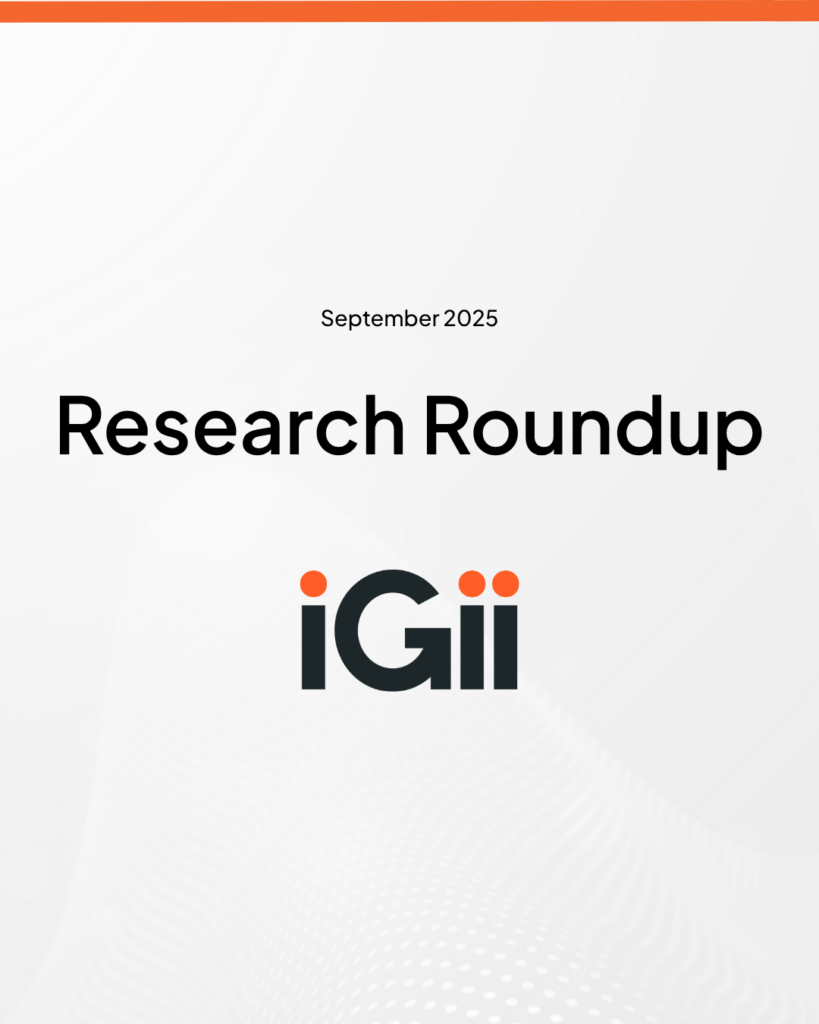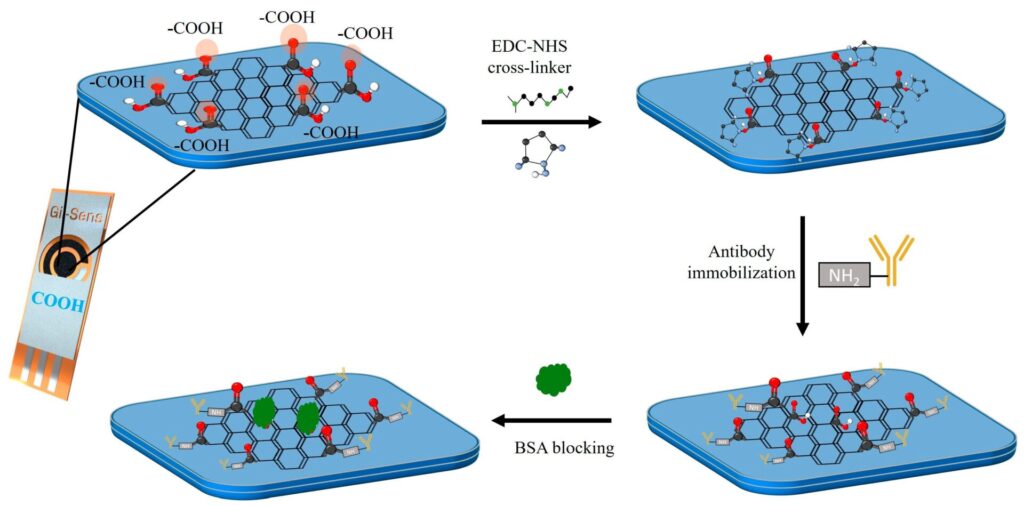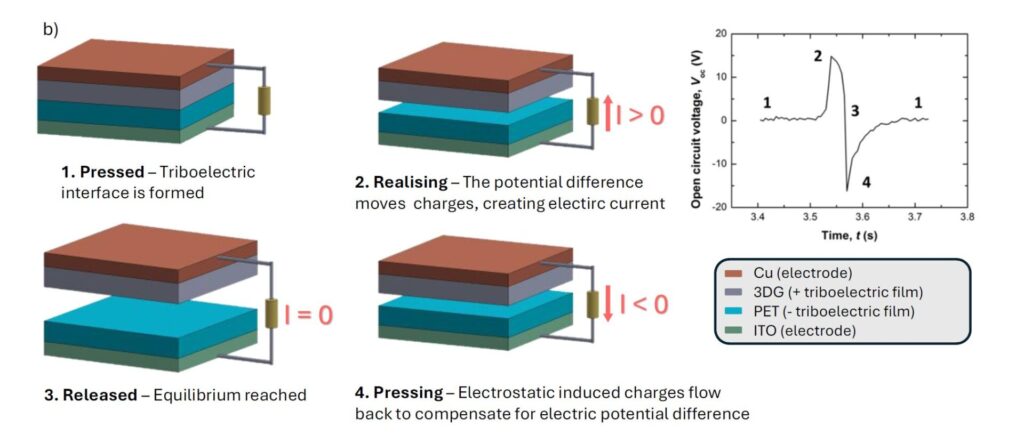
iGii Research Roundup – September 2025
Welcome to the Research Roundup series.
In this series, we provide brief updates on the latest academic research across the world making use of our sustainable carbon nanomaterial, Gii.
1. Gii in an electrochemical impedance-based capacitance sensing
What is it?
This study evaluates the influence of pH changes to the capacitance of Gii-Sens cards with PMA in the development and optimisation of a wireless quantum capacitance sensing.
Why does it matter?
Capacitance sensing techniques measure the direct coupling. It offers a label-free, highly sensitive. This will remove costs that most traditional sensors include to ensure that the sensor and functionalised surface are stable and as specific as possible.
Want to find out more?
You can read the publication here
Reference: Sandrena Steeds, Lucy Parker, Simon M. Wikeley, Benjamin Kersch-Hunt, Marco Caffio, Pablo Lozano-Sanchez, Philip J. Fletcher, Sara E.C. Dale, Tony D. James, Frank Marken, pH effects on graphene foam capacitance induced by adsorption of 1-pyrenemethylamine, Talanta, Volume 292, 2025, 127938, ISSN 0039-9140, https://doi.org/10.1016/j.talanta.2025.127938.
2. Gii as a Nano biosensors to address the future needs in diagnostics
What is it?
Nano biosensing has advanced significantly over the last few years, offering a solution to improve sensitivity, multiplexing capabilities, and multimodal operations. This article reviews the existing and upcoming technologies within biosensing and their performance to address the future needs in diagnostics.
Why does it matter?
The exploration, understanding and development of nano biosensors offer rapid, accurate testing that can enable early detection and diagnosis of biomarkers for faster, informed decisions for better prognosis.
Cost-effective, rapid and accurate tests also open doors to allow for well-being and health monitoring.
Want to find out more?
You can read the publication here
Reference: JOURHigh-performance nanobiosensing technologies for future diagnostic needsMartinez-Banderas, Aldo I. Malki, Anas Froehlich, Thomas Petrich, Wolfgang doi: 10.1016/j.tibtech.2025.05.014 https://doi.org/10.1016/j.tibtech.2025.05.014
3. Gii in sensing platforms to optimise HVAC and lighting in smart buildings.
What is it?
The publication investigates the capabilities of real-time occupancy data using triboelectric and piezoresistive pressure sensors.
Why does it matter?
Being able to monitor occupancy within a building in real-time can optimise HVAC systems and enable efficient energy management. They can help reduce excess energy, decreasing up to 40-55% when lights can be automatically switched off when there is no one in the room and via environmental control systems. This can help companies and building owners to reduce their carbon footprint.
With the triboelectric feature, these mats can also generate energy with each footstep, creating a self-sufficient solution that does not require an energy source and is environmentally friendly.
Want to find out more?
You can read the publication here
Reference: I. Ruiz-García et al., “Sustainable Occupancy Sensing Platform via Triboelectric and Piezoresistive Pressure Sensors,” in IEEE Sensors Letters, vol. 9, no. 8, pp. 1-4, Aug. 2025, Art no. 5503004, doi: 10.1109/LSENS.2025.3589020. keywords: {Triboelectricity;Sensors;Piezoresistance;Electrodes;Real-time systems;Immune system;Temperature sensors;Privacy;Pressure sensors;Monitoring;Sensor systems;graphene;Internet of Things ( IoT);piezoresistive effect;pressure sensor;triboelectric effect}
4. Electrochemical sensor on Tau411 for Alzheimer’s disease early diagnosis.
What is it?
The article from researchers at the University of Plymouth presents a highly sensitive, selective, simple immunosensor using Gii-Sens to detect Tau-441 protein, a biomarker for Alzheimer’s Disease.
Why does it matter?
Alzheimer’s Disease is a neurodegenerative disorder that increases in prevalence with age. It is a form of dementia and is characterised by the progressive decline of cognitive functions that can lead to difficulties in carrying out daily tasks.
Though there are currently no cures for Alzheimer’s Disease, early diagnosis can enable effective treatment to delay progression of the disease, enabling more and more people to live out their lives fully for longer.
Want to find out more?
You can read the publication here
Reference: High-performance nanobiosensing technologies for future diagnostic needs,Martinez-Banderas, Aldo I., Malki, Anas, Froehlich, Thomas, Petrich, Wolfgang, doi: 10.1016/j.tibtech.2025.05.014, 10.1016/j.tibtech.2025.05.014, Trends in Biotechnology, Elsevier, 0167-7799, https://doi.org/10.1016/j.tibtech.2025.05.014, 2025/09/30
4. Optical second harmonic generation from three-dimensional graphene films for non-linear optics.
What is it?
This publication directly observed second-harmonic generation (SHG) in Gii, a 3D graphene foam, uncovering that it supports nonlinear optical conversion. In contrast to many symmetric crystals (which forbid even-order harmonics), Gii displays intrinsic asymmetry: when we illuminated it with various light wavelengths, the emitted SHG peaks shift — a clear signature of its broken symmetry.
Why does it matter?
This is a big deal because it suggests carbon nanomaterials like Gii can play an active role in photonic systems. Instead of relying solely on electrons (which carry mass and have mobility limits), we can harness photons for signal transfer — enabling much faster, lower-loss connections. That opens paths toward integrating graphene-based materials into optical communication, broadband networks, and photonic devices
Want to find out more?
You can read the publication here
Reference: High-performance nanobiosensing technologies for future diagnostic needs,Martinez-Banderas, Aldo I., Malki, Anas, Froehlich, Thomas, Petrich, Wolfgang, doi: 10.1016/j.tibtech.2025.05.014, 10.1016/j.tibtech.2025.05.014, Trends in Biotechnology, Elsevier, 0167-7799, https://doi.org/10.1016/j.tibtech.2025.05.014, 2025/09/30
Interested in utilising Gii in your research projects? Get in touch with our team:


